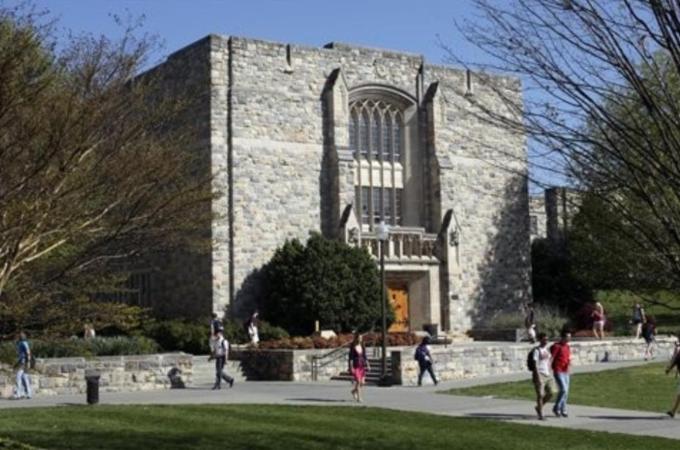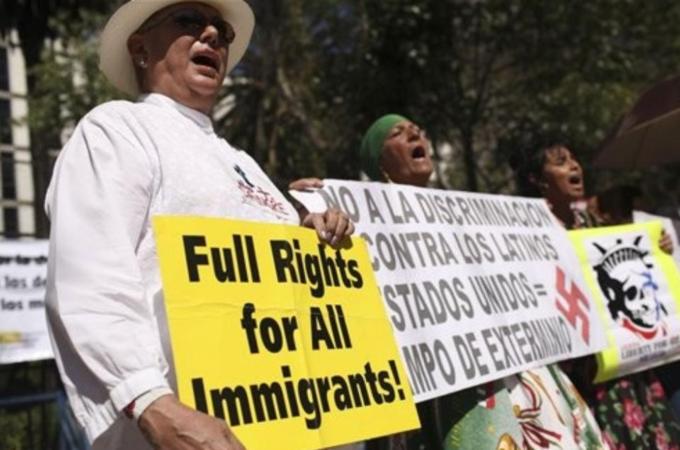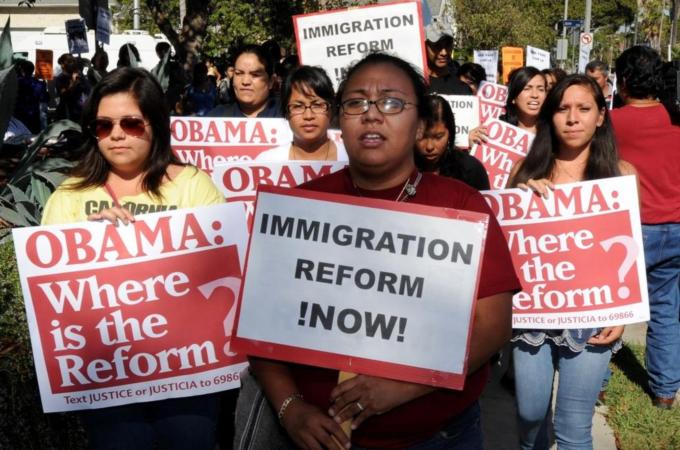
Sarah Kendzior is an anthropologist who recently recived her PhD from Washington University in St Louis.
 On April 8, 2013, the New York Times reported that 76 percent of American university faculty are adjunct professors – an all-time high. Unlike tenured faculty, whose annual salaries can top $160,000, adjunct professors make an average of $2,700 per course and receive no health care or other benefits.
On April 8, 2013, the New York Times reported that 76 percent of American university faculty are adjunct professors – an all-time high. Unlike tenured faculty, whose annual salaries can top $160,000, adjunct professors make an average of $2,700 per course and receive no health care or other benefits.
Most adjuncts teach at multiple universities while still not making enough to stay above the poverty line. Some are on welfare or homeless. Others depend on charity drives held by their peers. Adjuncts are generally not allowed to have offices or participate in faculty meetings. When they ask for a living wage or benefits, they can be fired. Their contingent status allows them no recourse.
No one forces a scholar to work as an adjunct. So why do some of America’s brightest PhDs – many of whom are authors of books and articles on labour, power, or injustice – accept such terrible conditions?
“Path dependence and sunk costs must be powerful forces,” speculates political scientist Steve Saidemen in a post titled “The Adjunct Mystery“. In other words, job candidates have invested so much time and money into their professional training that they cannot fathom abandoning their goal – even if this means living, as Saidemen says, like “second-class citizens”. (He later downgraded this to “third-class citizens”.)
With roughly 40 percent of academic positions eliminated since the 2008 crash, most adjuncts will not find a tenure-track job. Their path dependence and sunk costs will likely lead to greater path dependence and sunk costs – and the costs of the academic job market are prohibitive. Many job candidates must shell out thousands of dollars for a chance to interview at their discipline’s annual meeting, usually held in one of the most expensive cities in the world. In some fields, candidates must pay to even see the job listings.
Given the need for personal wealth as a means to entry, one would assume that adjuncts would be even more outraged about their plight. After all, their paltry salaries and lack of departmental funding make their job hunt a far greater sacrifice than for those with means. But this is not the case. While efforts at labour organisation are emerging, the adjunct rate continues to soar – from 68 percent in 2008, the year of the economic crash, to 76 percent just five years later.
|
Jobs report sees reduction in |
Contingency has become permanent, a rite of passage to nowhere.
A two-fold crisis
The adjunct plight is indicative of a two-fold crisis in education and in the American economy. On one hand, we have the degradation of education in general and higher education in particular. It is no surprise that when 76 percent of professors are viewed as so disposable and indistinguishable that they are listed in course catalogues as “Professor Staff”, administrators view computers which grade essaysas a viable replacement. Those who promote inhumane treatment tend to not favour the human.
On the other hand, we have a pervasive self-degradation among low-earning academics – a sweeping sense of shame that strikes adjunct workers before adjunct workers can strike. In a tirade for Slate subtitled “Getting a literature PhD will turn you into an emotional trainwreck, not a professor”, Rebecca Schuman writes:
“By the time you finish – if you even do – your academic self will be the culmination of your entire self, and thus you will believe, incomprehensibly, that not having a tenure-track job makes you worthless. You will believe this so strongly that when you do not land a job, it will destroy you.”
Self-degradation sustains the adjunct economy, and we see echoes of it in journalism, policy and other fields in which unpaid or underpaid labour is increasingly the norm. It is easy to make people work for less than they are worth when they are conditioned to feel worthless.
Thomas A Benton wrote in 2004, before tackling the title question, “Is Graduate School a Cult?”:
“Although I am currently a tenure-track professor of English, I realise that nothing but luck distinguishes me from thousands of other highly-qualified PhD’s in the humanities who will never have full-time academic jobs and, as a result, are symbolically dead to the academy.”
Benton’s answer is yes, and he offers a list of behaviour controls used by cults – “no critical questions about leader, doctrine, or policy seen as legitimate”, “access to non-cult sources of information minimised or discouraged” – that mirror the practices of graduate school. The author lived as he wrote: it was later revealed that “Thomas A Benton” was a pseudonym used by academic William Pannapacker when he wrote for the Chronicle of Higher Education – a publication said to employ more pseudonyms than any other American newspaper. The life of the mind is born of fear.
Some may wonder why adjuncts do not get a well-paying non-academic job while they search for a tenure-track position. The answer lies in the cult-like practices Pannapacker describes. To work outside of academia, even temporarily, signals you are not “serious” or “dedicated” to scholarship. It does not matter if you are simply too poor to stay: in academia, perseverance is redefined as the ability to suffer silently or to survive on family wealth. As a result, scholars adjunct in order to retain an institutional affiliation, while the institution offers them no respect in return.
Dispensable automatons
Is academia a cult? That is debatable, but it is certainly a caste system. Outspoken academics like Pannapacker are rare: most tenured faculty have stayed silent about the adjunct crisis. “It is difficult to get a man to understand something when his job depends on not understanding it,” wrote Upton Sinclair, the American author famous for his essays on labour exploitation. Somewhere in America, a tenured professor may be teaching his work, as a nearby adjunct holds office hours out of her car.
| “It is easy to make people work for less than they are worth when they are conditioned to feel worthless.” |
On Twitter, I wondered why so many professors who study injustice ignore the plight of their peers. “They don’t consider us their peers,” the adjuncts wrote back. Academia likes to think of itself as a meritocracy – which it is not – and those who have tenured jobs like to think they deserved them. They probably do – but with hundreds of applications per available position, an awful lot of deserving candidates have defaulted to the adjunct track.
The plight of the adjunct shows how personal success is not an excuse to excuse systemic failure. Success is meaningless when the system that sustained it – the higher education system – is no longer sustainable. When it falls, everyone falls. Success is not a pathway out of social responsibility.
Last week, a corporation proudly announced that it had created a digital textbook that monitors whether students had done the reading. This followed the announcement of the software that grades essays, which followed months of hype over MOOCs – massive online open courses – replacing classroom interaction. Professors who can gauge student engagement through class discussion are unneeded. Professors who can offer thoughtful feedback on student writing are unneeded. Professors who interact with students, who care about students, are unneeded.
We should not be surprised that it has come to this when 76 percent of faculty are treated as dispensable automatons. The contempt for adjuncts reflects a general contempt for learning. The promotion of information has replaced the pursuit of knowledge. But it is not enough to have information – we need insight and understanding, and above all, we need people who can communicate it to others.
People who have the ability to do this are not dispensable. They should not see themselves this way, and they should not be treated this way. Fight for what you are worth, adjuncts. Success is solidarity.
Sarah Kendzior is a writer and analyst who studies digital media and politics. She has a PhD in anthropology from Washington University.










